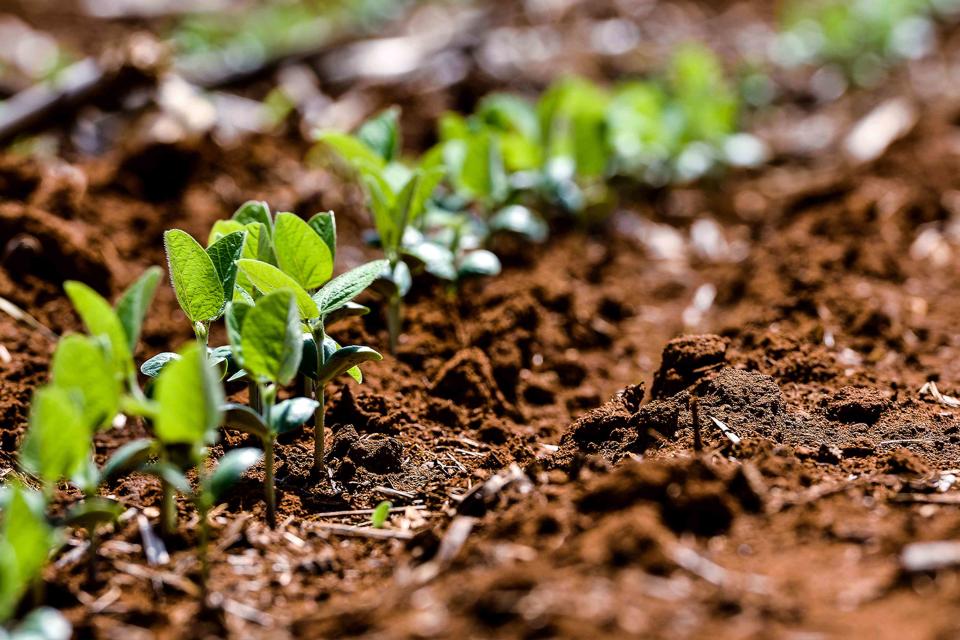Why You Should Test the pH of Your Soil—and 3 Ways to Do It
Knowing the pH of your soil will help you find plants that can thrive in your garden.

Lucas Ninno / Getty Images
Soil pH is the measurement that indicates how acidic or alkaline your soil is. This level impacts plants' ability to uptake nutrients and ultimately dictates how well they thrive in your garden. In order to determine soil pH, gardeners must first conduct a soil test. A soil test tells you what amendments to consider adding to your soil and is a good indicator of what plants can survive in your landscape. Ahead, we're sharing a few foolproof ways to test your soil pH, including an easy DIY method.
Meet the Expert
Ryan McEnaney, garden designer and author of Field Guide to Outside Style: Design and Plant Your Perfect Outdoor Space
Misti Mathis, co-owner of Harvest Gold Organics
Related: 21 Plants That Improve Soil Quality, Making Your Whole Garden Thrive
When to Test Soil pH
Generally, the best time to test soil pH is in the fall. This gives soil amendments, like compost, time to break down and improve the health of your soil before spring planting, says Ryan McEnaney, garden designer and author of Field Guide to Outside Style: Design and Plant Your Perfect Outdoor Space. But so long as the soil temperature is above 50 degrees, you can typically test it any time, which you may want to do before starting a new garden bed or if your plants are struggling.
How Often to Test Soil pH
Aim to conduct a soil test every few years, especially in beds you’ve been amending with compost or nutrients. "As organic matter breaks down or soil amendments are applied and integrated into the soil, it helps to understand the impact," says McEnaney. "Remember that you might need to test more than one area of your landscape because soil can vary from site to site." For example, some plants can make the soil more acidic, while other areas may be more alkaline. Regular testing will help assess what’s working and what you need to adjust to boost the health of your soil.
Note
These tests will give you a general idea of soil pH, but for a more accurate reading, submit a soil sample to your local Extension office.
How to Test Soil pH With Vinegar
A quick DIY way to test whether you have acidic or alkaline soil at home is with a small scoop of soil, vinegar, and baking soda, says McEnaney.
Collect a scoop of soil from your yard.
Split the soil evenly between two jars.
In the first jar, mix the soil with a 1/2 cup of vinegar.
In the second jar, mix the soil with 2 tablespoons of distilled water and a 1/2 cup of baking soda.
If the vinegar mixture fizzes, you have alkaline soil. If the baking soda mixture fizzes, you have acidic soil. And if neither fizz, your pH is neutral and around 7.0.
Related: Perlite Is the Secret to Improving Soil Drainage—Here's How to Use It in Your Garden
How to Test Soil pH With Strips
Many soil test kits you'll find online or at your local garden center use color indicators to measure soil pH, says Misti Mathis, co-owner of Harvest Gold Organics. While the process may vary depending on the type of kit you have, most products follow a similar formula.
Collect a scoop of soil from your yard.
Mix the soil sample with distilled water, which is free of elements that may skew your results.
Let the mixture sit for at least 30 minutes.
Strain the water using cheesecloth or a coffee filter.
Dip the strip in the filtered water, keeping it in the mixture for as long as directed.
Compare the color of the strip to your kit's key to determine soil pH.
Related: How to Identify Your Soil Type—Plus, the Best Flower and Plant Varieties to Grow in Each
How to Test Soil pH With a Meter
Beyond sending a sample to your local Extension office, the most accurate reading for soil pH is with an electronic meter, says Mathis. It's also the easiest way to test your soil.
Insert the meter's probe into moist soil.
Let the probe sit in the soil until you get a digital readout of the pH level.
Read the original article on Martha Stewart.

